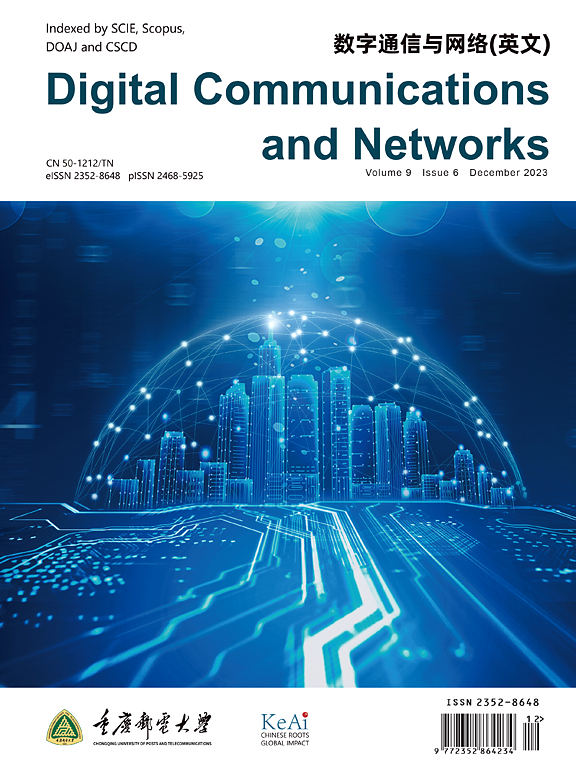基于图卷积网络增强学习的边缘计算容器簇布局
IF 7.5
2区 计算机科学
Q1 TELECOMMUNICATIONS
引用次数: 0
摘要
基于容器的虚拟化技术由于其资源占用更轻、启动速度更快、资源利用效率更高等优势,近年来在边缘计算环境中得到了更广泛的应用。为了满足任务的多样化需求,通常需要以容器的形式实例化多个网络功能,将各种生成的容器互联起来,构建一个容器集群(Container Cluster, CC)。然后将cc部署在资源相对有限的边缘业务节点上。然而,任务的复杂性和时变特性给CC的优化配置带来了巨大的挑战,本文将提供服务所占用的各种资源的费用作为收益,将服务效率和能耗作为成本,建立了混合整数规划(MIP)模型来描述CC在边缘服务节点上的最优配置。在此基础上,提出了一种基于Actor-Critic的深度强化学习(DRL),结合图卷积网络(GCN)框架,称为RL-GCN来解决优化问题。该框架根据CC放置的要求和目标,通过自学习获得最优放置策略,特别是通过引入GCN,可以有效提取CC中多个容器之间的关联关系特征,提高放置质量。实验结果表明,在不同规模的服务节点和任务请求下,与其他代表性基线方法相比,所提方法在放置错误率、解输出的时间效率和系统累计收益方面都能获得更好的系统性能。本文章由计算机程序翻译,如有差异,请以英文原文为准。
Container cluster placement in edge computing based on reinforcement learning incorporating graph convolutional networks scheme
Container-based virtualization technology has been more widely used in edge computing environments recently due to its advantages of lighter resource occupation, faster startup capability, and better resource utilization efficiency. To meet the diverse needs of tasks, it usually needs to instantiate multiple network functions in the form of containers interconnect various generated containers to build a Container Cluster (CC). Then CCs will be deployed on edge service nodes with relatively limited resources. However, the increasingly complex and time-varying nature of tasks brings great challenges to optimal placement of CC. This paper regards the charges for various resources occupied by providing services as revenue, the service efficiency and energy consumption as cost, thus formulates a Mixed Integer Programming (MIP) model to describe the optimal placement of CC on edge service nodes. Furthermore, an Actor-Critic based Deep Reinforcement Learning (DRL) incorporating Graph Convolutional Networks (GCN) framework named as RL-GCN is proposed to solve the optimization problem. The framework obtains an optimal placement strategy through self-learning according to the requirements and objectives of the placement of CC. Particularly, through the introduction of GCN, the features of the association relationship between multiple containers in CCs can be effectively extracted to improve the quality of placement. The experiment results show that under different scales of service nodes and task requests, the proposed method can obtain the improved system performance in terms of placement error ratio, time efficiency of solution output and cumulative system revenue compared with other representative baseline methods.
求助全文
通过发布文献求助,成功后即可免费获取论文全文。
去求助
来源期刊

Digital Communications and Networks
Computer Science-Hardware and Architecture
CiteScore
12.80
自引率
5.10%
发文量
915
审稿时长
30 weeks
期刊介绍:
Digital Communications and Networks is a prestigious journal that emphasizes on communication systems and networks. We publish only top-notch original articles and authoritative reviews, which undergo rigorous peer-review. We are proud to announce that all our articles are fully Open Access and can be accessed on ScienceDirect. Our journal is recognized and indexed by eminent databases such as the Science Citation Index Expanded (SCIE) and Scopus.
In addition to regular articles, we may also consider exceptional conference papers that have been significantly expanded. Furthermore, we periodically release special issues that focus on specific aspects of the field.
In conclusion, Digital Communications and Networks is a leading journal that guarantees exceptional quality and accessibility for researchers and scholars in the field of communication systems and networks.
 求助内容:
求助内容: 应助结果提醒方式:
应助结果提醒方式:


